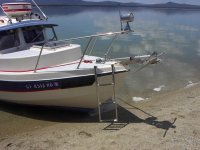Greatlakesboater
New member
- Joined
- Aug 26, 2013
- Messages
- 9
- Reaction score
- 0
- C Dory Year
- 2003
- C Dory Model
- 22 Cruiser
- Vessel Name
- Encore
I'm a recent owner of as CD22 and was perusing this wonderful site for info on beaching techniques. I live on the Great Lakes without being concerned with tides. I came across a string of comments related to the draft and it seems that the 22 can be comfortably run to about 12" with the engines trimmed up. But I would be interested in learning from you guys what techniques you use for beaching. Approach techniques ? Stern in or bow in ? How about swinging in a-beam ? Is it really necessary to run a stern anchor for reverse hauling ?
Thanks.
Thanks.

